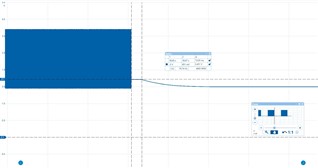Tool/software:
Hi, I have this issue which is somehow related to the driving method of the PWM input of TPS28225 .
As a background, we are using a PWM output from STM32 of 240kHz at a duty cycle of 10% to 18%. Thus, 3.3V PWM levels.
Also, I am utilising the pull-down resistor of 3.5kohm (R1 on the diagram) to disable the 3-state input mode as described on the design notes. However, there are instances that the outputs are not activated even though the PWM is driven to the gate driver.
At the moment, I am still investigating how the PWM output is set after a PWM drive ends - either floating or being set to a defined low level. But, so far by looking at the oscilloscope trace, it seems to be left floating for a period of time. I need to confirm this with FW colleagues.
Looking at the trace, at the attachment, I can't seem to comprehend why there is a 0.451V after the PWM end. However, if I removed the pull-down completely, that goes up to 2.4V which actually solves the inconsistenly of driving the output.



